Gold prices steady amid Fed rate cut hopes; Trump-Putin talks awaited
Introduction & Market Context
Aareal Bank (ETR:ARLG) AG (ETR:ARLn) reported a strong start to 2025 with its first-quarter results presentation delivered on May 15, 2025, by CEO Dr. Christian Ricken and CFO Andy Halford. The German real estate lender achieved a 15% year-over-year increase in adjusted operating profit despite facing a lower interest rate environment, demonstrating resilience in its business model and effective risk management.
The bank’s performance reflects its strategic focus on maintaining a diversified commercial real estate portfolio across major global metropolitan areas, with particular strength in Western Europe and North America, while continuing to expand its green financing initiatives.
Quarterly Performance Highlights
Aareal Bank reported an adjusted operating profit of €107 million for Q1 2025, up 15% from €93 million in the same period last year. This growth came despite a 7% decline in net interest income, which fell to €249 million from €268 million in Q1 2024, though management noted this level remains historically high.
As shown in the following comprehensive financial overview, the bank benefited significantly from a 36% reduction in loan impairment charges, which decreased to €55 million from €86 million in Q1 2024:
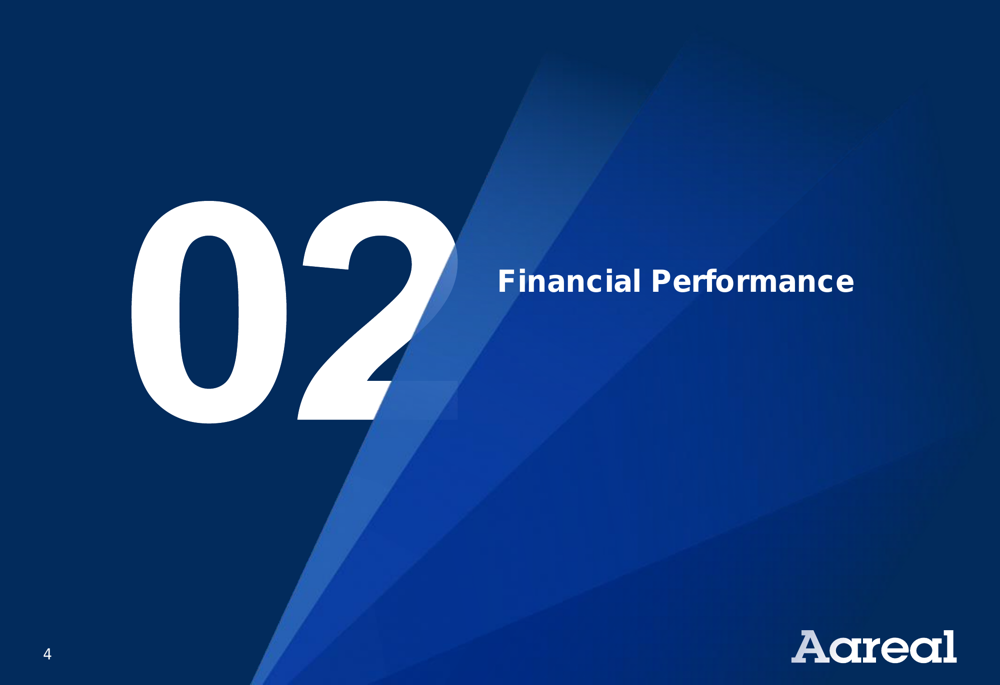
The bank’s adjusted return on equity remained stable at 8.2%, as the increase in adjusted operating profit was offset by higher AT1 costs due to the overlapping replacement of an existing AT1 bond and increased equity. Administrative expenses rose 7% to €88 million, driven by higher project costs as the bank prioritizes specific change initiatives.
Business Performance
Aareal Bank’s new business volume showed impressive growth in Q1 2025, reaching €2.3 billion compared to €0.9 billion in the same period last year. This new business maintained good margins at 281 basis points and conservative loan-to-value ratios, reflecting the bank’s disciplined approach to growth.
The following chart illustrates the new business volume and its distribution across regions and property types:
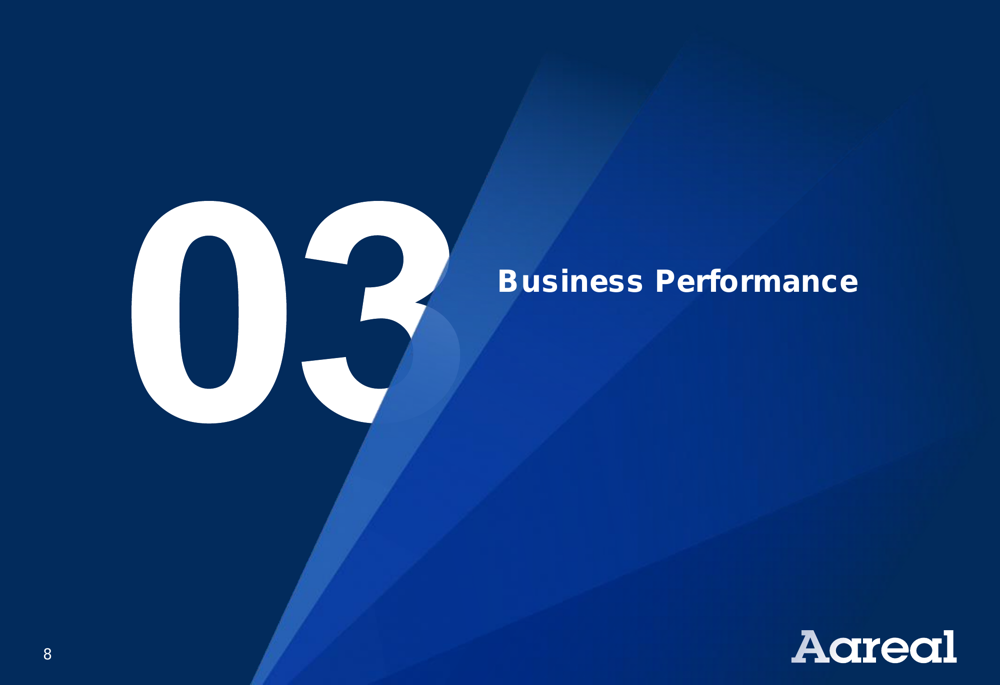
Hotels dominated the new business mix at 53%, followed by retail (20%) and logistics (15%), while geographically, Western Europe accounted for 40% of new business, with Southern Europe (22%) and North America (16%) also making significant contributions. Notably, €0.7 billion of the new business consisted of green loans, underscoring Aareal’s commitment to sustainable financing.
The bank’s overall real estate financing portfolio remained stable at €33.0 billion as of March 2025, with a slight reduction of €0.4 billion due to foreign exchange effects compared to December 2024:
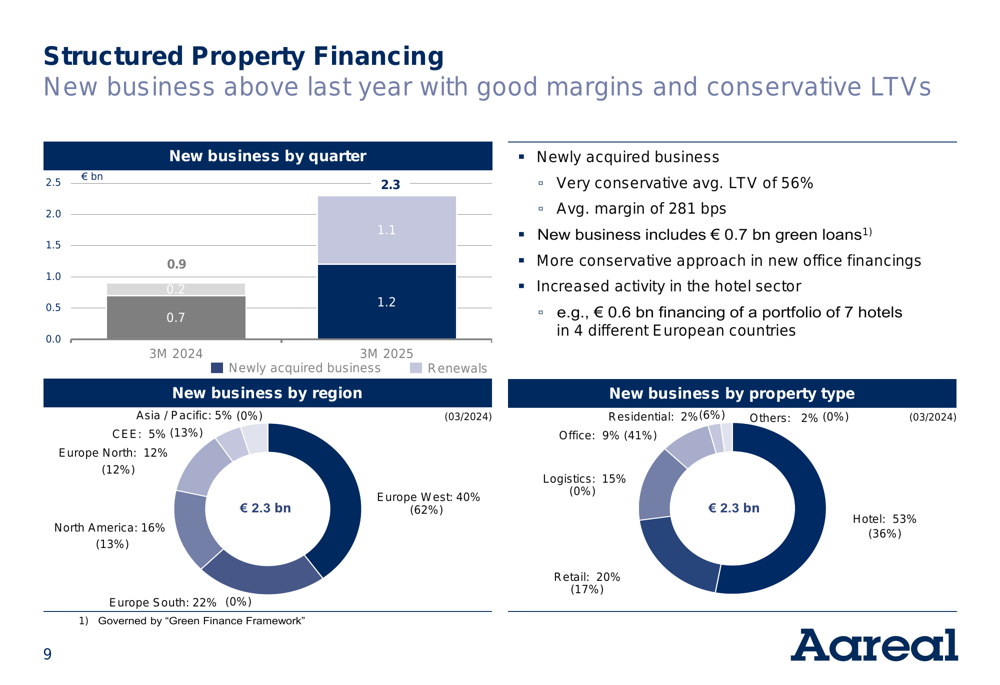
The portfolio maintains a high level of diversification, with Western Europe representing 40% and North America 25% of the total. By property type, hotels account for 35%, followed by office properties at 26%, logistics at 17%, and retail at 15%.
Risk Management & Asset Quality
A key positive development in Q1 2025 was the further reduction in non-performing loans (NPLs) to €1,304 million, down from €1,381 million at the end of 2024. This improvement reflects the bank’s effective risk management strategies and the gradual resolution of problem loans.
The following chart shows the NPL development and breakdown by country and property type:
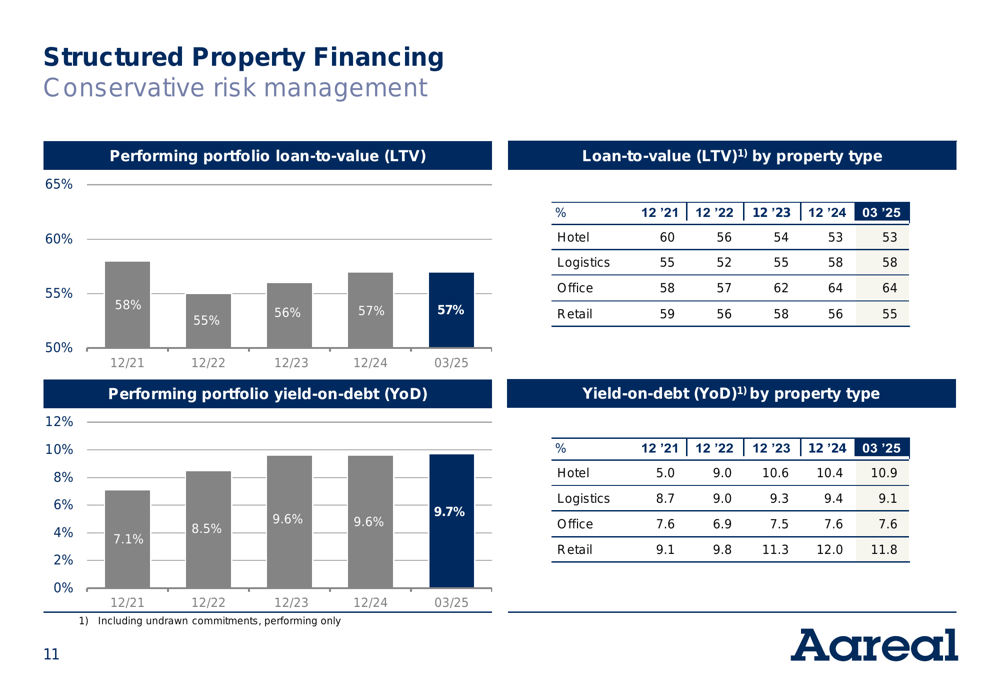
The non-performing exposure ratio stood at 2.6%, with a coverage ratio of 28%. The U.S. market, particularly the office sector, continues to present challenges, accounting for 60% of the bank’s non-performing loans. However, the overall trend shows improvement in asset quality.
The loan-to-value ratio for the performing portfolio remained stable at 57%, while the yield-on-debt improved slightly to 9.7% from 9.6% at the end of 2024, indicating the portfolio’s resilience and profitability despite market challenges.
Funding, Liquidity & Capital
Aareal Bank reported a very comfortable funding and liquidity position, having already achieved approximately 75% of its full-year funding plan. The bank’s liability structure is well-diversified, with deposits accounting for 43% of funding:
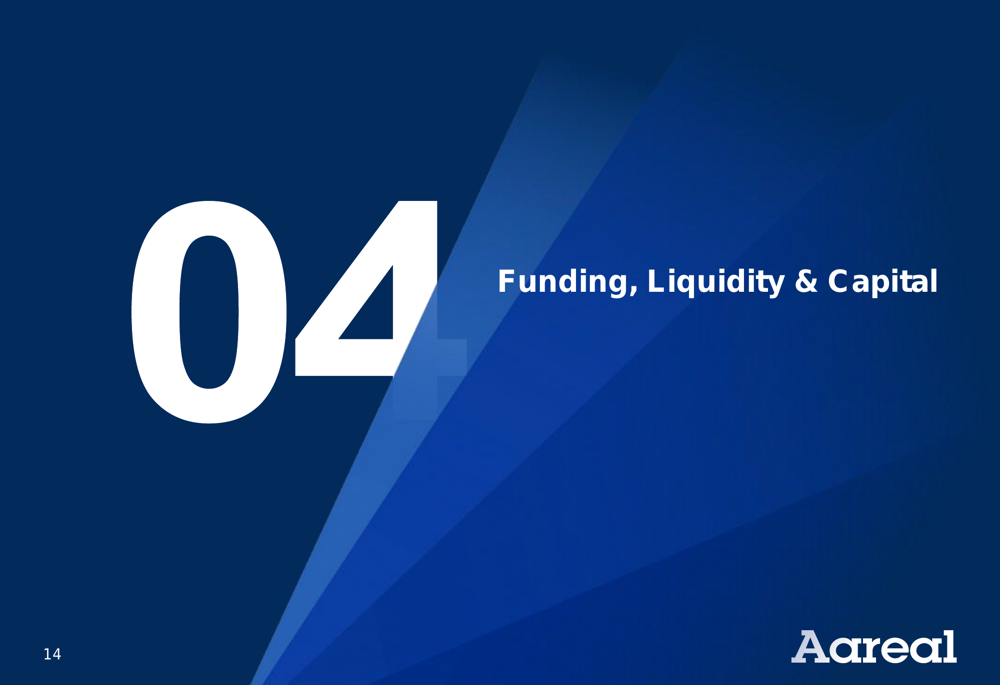
The bank successfully increased its AT1 capital by a net €100 million through the replacement of an outstanding €300 million instrument with a new USD 425 million issuance. Liquidity ratios remain solid, with a Net Stable Funding Ratio (NSFR) of 118% and a Liquidity Coverage Ratio (LCR) of 219%.
Capital ratios showed further improvement, with the CET1 ratio (phase-in) increasing to 20.6% from 20.2% at the end of 2024, providing a substantial buffer above regulatory requirements:
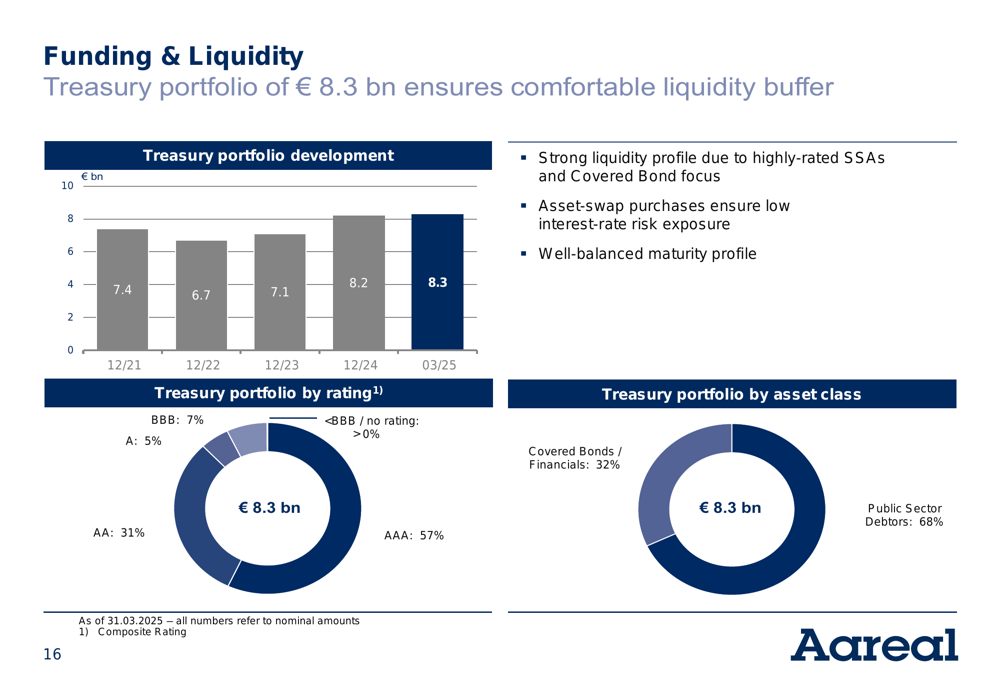
The improvement in capital ratios was primarily driven by a reduction in risk-weighted assets (RWA) to €14.0 billion from €14.3 billion at the end of 2024. The fully phased-in CET1 ratio stood at 15.3%, slightly up from 15.2% at the end of 2024.
Outlook & Strategic Initiatives
Looking ahead, Aareal Bank maintained its full-year 2025 guidance, targeting an operating profit of €375-425 million and a return on equity of 7-8%. The bank aims to grow its real estate financing portfolio to €34-35 billion by the end of 2025, up from €33.5 billion at the end of 2024:
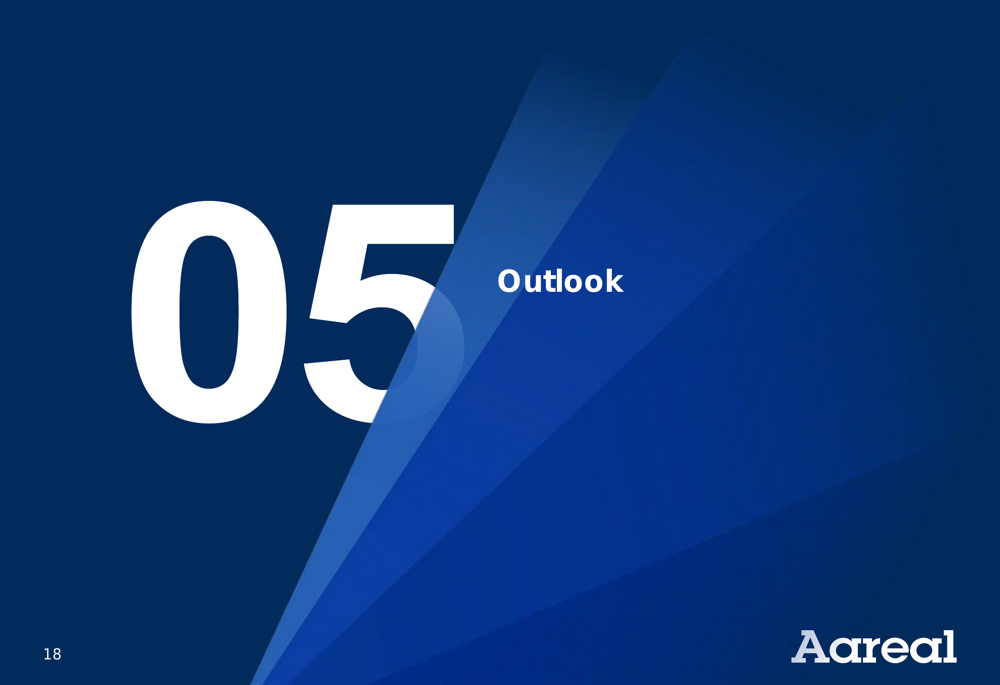
The bank’s longer-term strategic initiative, "Aareal AMBITION," targets a return on equity of at least 13%, supported by growth in both on-balance sheet (target:€37 billion) and off-balance sheet (target:€9 billion) commercial real estate loan books, while maintaining a non-performing exposure ratio below 3% and a cost-income ratio below 30%.
Aareal Bank continues to emphasize its ESG commitments, with €8.3 billion in green loans already on its books. The bank’s strategic focus on sustainable financing aligns with its goal of supporting clients on their "Road to Paris" climate commitments while maintaining a diversified and resilient portfolio across different property types and geographic regions.
The strong start to 2025, with significant improvements in operating profit and reduced loan impairments, positions Aareal Bank well to achieve its full-year targets despite the challenges of a lower interest rate environment and ongoing concerns in specific market segments such as U.S. office properties.
Full presentation:
This article was generated with the support of AI and reviewed by an editor. For more information see our T&C.
